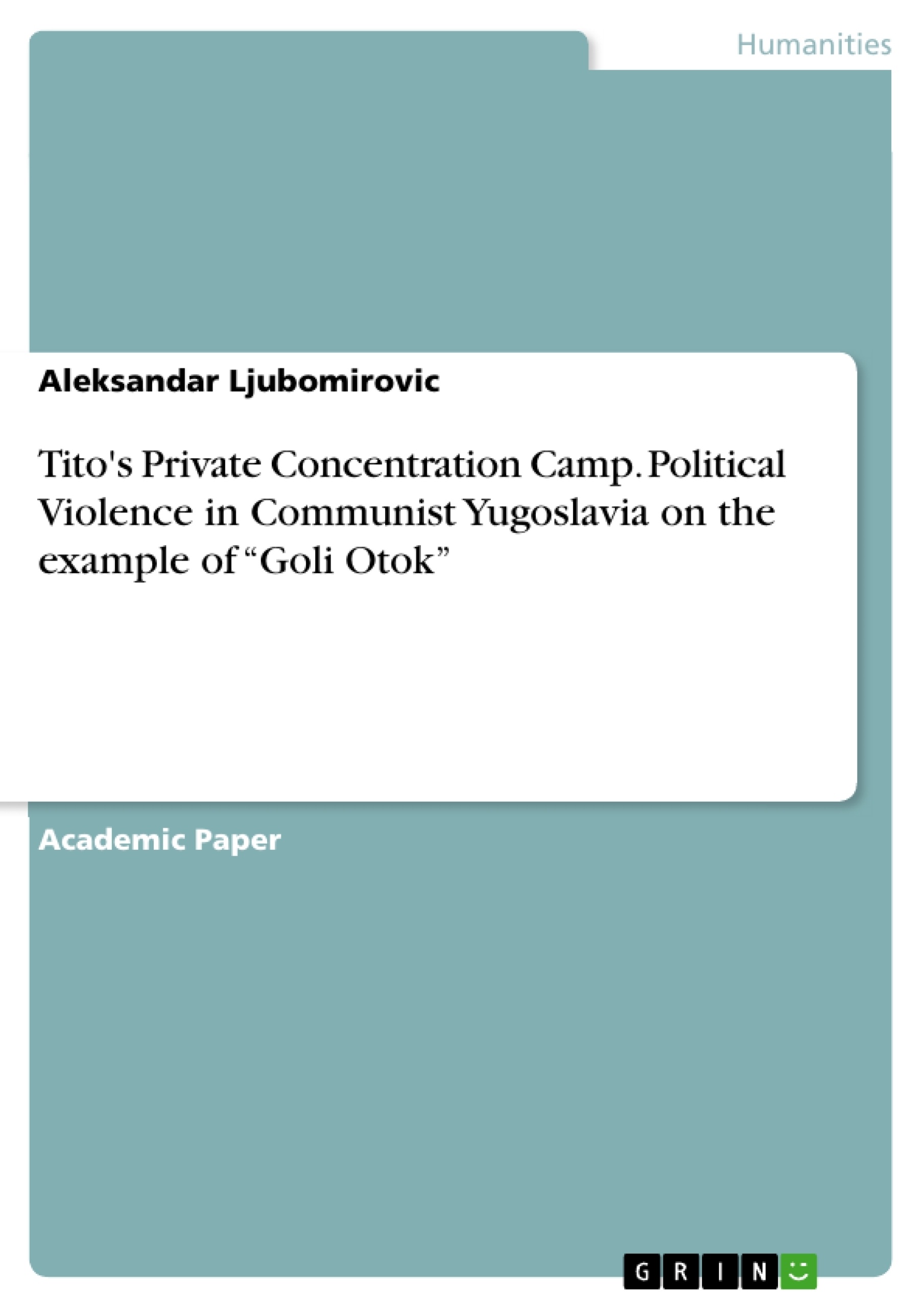The Yugoslav political prison named “Goli Otok”, located on a barren and uninhabited island in the Adria, was one of the worst detention centres in the 20st century, but it has gone rather unnoticed by contemporary scholars. This text aims to unravel the story about the prison on a small island, situated between the Croatian vacation paradises Krk and Rab, which served as the private concentration camp of the Yugoslav Communist Party – or more precisely: of Marshall Tito. It seeks to find solid answers to the question why this top-secret prison was formed in the first place and what purpose it served for the communist elite at the time.
Yugoslavia’s “Barren Island” internment camp was established back in 1949, merely a year after the famous split from the Soviet Union, and it is therefore usually said that this political prison was mainly for the so-called “Stalinists”. Although this is somewhat true, there were also other political enemies who were imprisoned on Goli Otok, mostly after 1955 and the reconciliation between Yugoslavia and the Soviet Union when basically all opponents of the regime were brought to the infamous island. Thus, this essay examines the need for political repression in former Yugoslavia, considering the historical background of the time and consequently addressing the question of the detainees on the Yugoslav Barren Island in the period between 1949-1989, when the Iron Curtain began to crumble across Eastern Europe and the detention centre was abandoned.
Inhaltsverzeichnis (Table of Contents)
- Abstract
- 1. Introduction: “The Forgotten Hell of the Adria”
- 1.1 The Problem and Objective of the Article:
- 1.2 Status of the Research:
- 1.3 Central Question of the Article:
- 1.4 The Approach (Structure, Argumentation and Methods):
- 1.5 Methodology - Qualitative Content Analysis:
- 2. Goals of Political Violence on the Example of Goli Otok:
- 2.1 Historical Background: “The Tito-Stalin Split”:
- 2.2 Goli Otok - The Perfect Example of Political Repression in Former Yugoslavia:
- 3. The Aftermath of Stalin's Death: Has Anything Changed?
- 4. Conclusion: Goli Otok - A Part of Collective Memory or Forgotten?
- 5. Listing of Sources and Literature:
- 5.1 Bibliography - List of Literature Sources:
- 5.2 Links to Online Sources:
Zielsetzung und Themenschwerpunkte (Objectives and Key Themes)
This article aims to unravel the history of the Yugoslav political prison on Goli Otok, a little-known but significant example of political repression during the communist regime in former Yugoslavia. It focuses on the political goals behind the establishment and operation of the prison, examining the historical context of the Tito-Stalin split and the broader political landscape of the time.
- The political violence and human rights abuses in Goli Otok
- The motives and goals of the Yugoslav Communist Party in establishing the prison
- The historical context of the Tito-Stalin split and its implications for Yugoslavia
- The impact of the prison on various political groups and individuals, including supporters of the Cominform, anti-communists, and nationalists
- The role of the Yugoslav State Security Administration (UDBA) in the operation and secrecy of the prison
Zusammenfassung der Kapitel (Chapter Summaries)
The introduction explores the problem of Goli Otok being largely ignored in contemporary scholarship on political violence. It argues that the prison serves as a textbook example of political repression in former Yugoslavia, despite its current obscurity. This chapter delves into the political context of the period, particularly the Tito-Stalin split and its impact on Yugoslavia's political landscape. It also examines the motives behind the creation of Goli Otok, including the desire for national re-education and the suppression of opposition groups.
The second chapter explores the historical background of the Tito-Stalin split, providing context for the establishment of Goli Otok. It examines the specific goals of the Yugoslav Communist Party in using the prison as a tool of political repression. The chapter also discusses the various political groups and individuals who were incarcerated on the island, highlighting the diverse range of political opposition targeted by the regime.
The third chapter delves into the aftermath of Stalin's death and explores whether the demise of the Soviet dictator led to any changes in the operation or purpose of Goli Otok. It investigates if there were shifts in the political landscape of Yugoslavia that influenced the continued use of the prison as a means of repression.
The fourth chapter will analyze the legacy of Goli Otok and its place in collective memory. It will explore whether the prison has been forgotten or if it remains a significant historical event, particularly within the context of the former Yugoslavia. The chapter will investigate the reasons for the relative lack of attention paid to Goli Otok compared to other notable examples of political violence like the Nazi Konzentrationslager and the Soviet Gulag.
Schlüsselwörter (Keywords)
The core focus of this article is on the political violence perpetrated by the Yugoslav Communist Party through its use of the Goli Otok internment camp. Key terms and concepts include political repression, Tito-Stalin split, Yugoslav State Security Administration (UDBA), political prisoners, opposition groups, nationalism, national re-education, and historical memory.
- Quote paper
- Aleksandar Ljubomirovic (Author), 2021, Tito's Private Concentration Camp. Political Violence in Communist Yugoslavia on the example of “Goli Otok”, Munich, GRIN Verlag, https://www.grin.com/document/1338034



